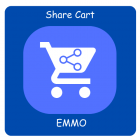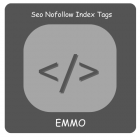Maximizing Magento 2 Crawlability and Indexing for SEO

Maximizing Magento 2 Crawlability and Indexing for SEO
To improve your Magento 2 website's crawlability and indexing, you need to focus on optimizing site architecture, metadata, and technical settings. These improvements directly impact how search engines understand, rank, and display your website, leading to better SEO performance.
Table Of Content
Crawlability and Indexing: A Complete Guide
Crawlability is how well search engine bots can navigate and read your website’s content. These bots move from page to page through links, analyzing your site’s structure and content. Ideally, bots should access all pages without issues. However, problems like broken links or blocked pages can stop them, affecting how much of your site gets indexed.
Indexing is what happens after crawling. It’s the process of storing and organizing your website’s content so it appears in search engine results. If a page isn’t indexed, it won’t show up in search results, no matter how valuable the content is. For any eCommerce store, indexing is crucial for visibility and search rankings.
Common Crawlability and Indexing Issues
Some problems can prevent bots from properly crawling or indexing your site:
- Blocked Pages: Pages restricted by robots.txt or noindex tags.
- Broken Links: Dead links disrupt bot navigation.
- Slow Loading Pages: Pages that take too long to load may be skipped.
- Duplicate Content: Confuses bots, leading to lower rankings.
- Orphan Pages: Pages without internal links are harder to find.
Why It Matters
Without proper crawlability and indexing, your SEO efforts will fall flat. Search engines rely on these processes to understand your content and make it accessible to users. Even the best keywords or compelling content won’t help if bots can’t reach or store your pages.
Practical Tips to Boost Magento 2 Crawlability and Indexing
Improving crawlability and indexing in Magento 2 directly impacts your search engine rankings. This guide explores actionable strategies to help search crawlers efficiently index your site while minimizing common issues.
Prevent Duplicate Content with Canonical URLs
Duplicate content is a major hurdle for eCommerce websites. Magento 2 stores often generate duplicate pages due to multiple URLs for the same product or category, or variations like HTTP vs. HTTPS. These duplicates confuse crawlers and dilute link equity.
Adding canonical tags to your pages solves this problem by pointing crawlers to the preferred version of a URL. This approach consolidates ranking signals and enhances the SEO performance of your main pages.
Speed Up Page Loading Times
Search engines favor fast-loading websites. Slow sites risk crawlers abandoning the process, leaving critical pages unindexed.
Here’s how to improve page speed:
| Method | Benefit |
|---|---|
| CDN | Faster global load times |
| WebP Image Optimization | Smaller file sizes, faster rendering |
| Caching | Reduces server load and response time |
Make Your Site Mobile-Friendly
Google prioritizes mobile-first indexing, so a poorly optimized mobile version will harm your rankings. Use responsive themes and test them across various devices to ensure a seamless experience.
If your existing theme isn’t responsive, consider hiring a developer for a custom design, keeping in mind the associated costs.
Maximize Crawl Budget Efficiency
Your crawl budget—the number of pages a crawler visits within a set time—should focus on high-priority pages. Optimize this by:
- Blocking irrelevant pages (e.g., admin pages) with
robots.txt. Using noindextags for low-value content.- Improving site architecture to make important pages more accessible.
Resolve 404 Errors with Redirects
Broken links not only frustrate users but also waste valuable crawl budget. Use tools to identify 404 errors and set up 301 redirects to guide crawlers and users to valid pages.
Optimize Site Navigation
Streamlined navigation improves crawlability and user experience.
- Ensure all pages include relevant internal links. Prioritize links to product and category pages.
- Keep critical pages within three clicks of the homepage.
- Use keyword-rich, descriptive anchor text for links to enhance SEO impact.
| Navigation Best Practices | SEO Advantage |
|---|---|
| Internal Links | Directs crawlers to deeper pages |
| Three-Click Rule | Ensures key pages are easy to find |
| Keyword-Rich Anchor Text | Improves relevance and ranking signals |
Conclusion: Refining Crawlability and Indexing
Magento 2 offers tools and strategies to address crawlability and indexing challenges. From canonical tags to improved navigation, these steps ensure that search crawlers efficiently index your most valuable content.
If you still face issues, perform a detailed audit of your site. Use SEO tools to identify errors, and implement solutions systematically. Regularly review performance to ensure your site remains optimized for search engines.
Tip
To enhance your eCommerce store’s performance with Magento, focus on optimizing site speed by utilizing Emmo themes and extensions. These tools are designed for efficiency, ensuring your website loads quickly and provides a smooth user experience. Start leveraging Emmo's powerful solutions today to boost customer satisfaction and drive sales!
FAQs
What Is Crawlability in Magento 2 and Why Is It Important?
Crawlability refers to how easily search engines can discover and index the pages on your Magento 2 store. Optimizing crawlability ensures that important pages are indexed, improving your search engine rankings and visibility.
How Do Duplicate Content Issues Affect Magento 2 Crawlability?
Duplicate content arises when the same page is accessible via multiple URLs, confusing search engines and wasting crawl budget. This can lead to poor indexing of priority pages and harm your SEO efforts.
What Are Canonical Tags, and How Do They Help in Magento 2?
Canonical tags help consolidate SEO value by specifying the preferred version of a page. They prevent duplicate content issues by guiding crawlers to focus on a single, primary URL, improving crawl efficiency.
Why Is Page Speed Crucial for Magento 2 Indexing?
Slow-loading pages discourage search engine crawlers, causing them to abandon indexing prematurely. Improving page speed through caching, image optimization, and using a CDN ensures that more pages are crawled and indexed effectively.
What Role Does Mobile Optimization Play in Crawlability?
Google uses a mobile-first indexing approach, prioritizing the mobile version of your site. Ensuring that your Magento 2 store is mobile-friendly with responsive themes and optimized layouts enhances crawlability and ranking.
How Can You Optimize Crawl Budget in Magento 2?
The crawl budget is the number of pages search engines will crawl within a set timeframe. You can optimize this by blocking low-priority pages with robots.txt, using noindex tags, and simplifying site architecture to make key pages more accessible.
What Are the Best Practices for Fixing 404 Errors?
404 errors waste crawl budget and frustrate users. Use 301 redirects to point broken links to active pages, ensuring that crawlers focus on valid URLs and improving overall site navigation.
Why Is Internal Linking Important for Magento 2 SEO?
Internal links guide crawlers to discover and prioritize deeper pages on your site. Add keyword-rich, descriptive links to product and category pages, and keep critical pages within three clicks of the homepage for better indexing.
What Are the Benefits of Using a CDN for Magento 2?
A CDN improves page load speed by delivering content from servers closer to the user’s location. This reduces latency, enhances user experience, and ensures search crawlers can index more pages efficiently.
How Do WebP Images Improve Magento 2 Page Speed?
WebP images are smaller than traditional formats like JPEG or PNG, reducing page load times significantly. Converting images to WebP ensures a faster, crawler-friendly site, enhancing both user experience and indexing.









